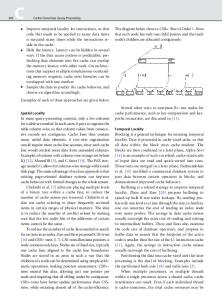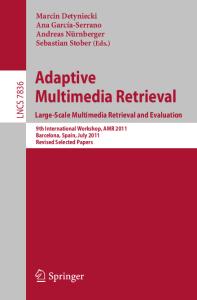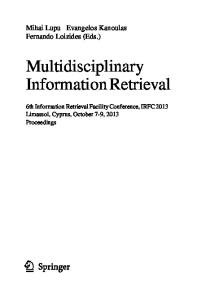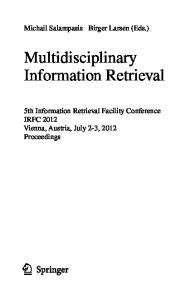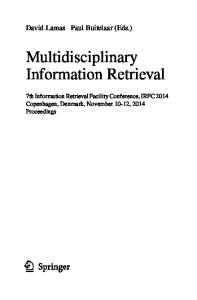Multimedia Information Retrieval Model
- PDF / 3,456,394 Bytes
- 212 Pages / 547.087 x 737.008 pts Page_size
- 3 Downloads / 312 Views
Machine Learning in Bioinformatics ▶ Machine Learning in Computational Biology
learning e.g., improved methods for learning from highly unbalanced datasets, for learning complex structures of class labels (e.g., labels linked by directed acyclic graphs as opposed to one of several mutually exclusive labels) from richly structured data such as macromolecular sequences, three-dimensional molecular structures, and reliable methods for assessing the performance of the resulting models, are critical to the transformation of biology from a descriptive science into a predictive science.
Historical Background
Machine Learning in Computational Biology C ORNELIA C ARAGEA , VASANT H ONAVAR Iowa State University, Ames, IA, USA
Synonyms Data mining in computational biology; Data mining in bioinformatics; Machine learning in bioinformatics; Machine learning in systems biology; Data mining in systems biology
Definition Advances in high throughput sequencing and ‘‘omics’’ technologies and the resulting exponential growth in the amount of macromolecular sequence, structure, gene expression measurements, have unleashed a transformation of biology from a data-poor science into an increasingly data-rich science. Despite these advances, biology today, much like physics was before Newton and Leibnitz, has remained a largely descriptive science. Machine learning [6] currently offers some of the most cost-effective tools for building predictive models from biological data, e.g., for annotating new genomic sequences, for predicting macromolecular function, for identifying functionally important sites in proteins, for identifying genetic markers of diseases, and for discovering the networks of genetic interactions that orchestrate important biological processes [3]. Advances in machine #
2009 Springer ScienceþBusiness Media, LLC
Large scale genome sequencing efforts have resulted in the availability of hundreds of complete genome sequences. More importantly, the GenBank repository of nucleic acid sequences is doubling in size every 18 months [4]. Similarly, structural genomics efforts have led to a corresponding increase in the number of macromolecular (e.g., protein) structures [5]. At present, there are over a thousand databases of interest to biologists [16]. The emergence of high-throughput ‘‘omics’’ techniques, e.g., for measuring the expression of thousands of genes under different perturbations, has made possible system-wide measurements of biological variables [8]. Consequently, discoveries in biological sciences are increasingly enabled by machine learning. Some representative applications of machine learning in computational and systems biology include: identifying the protein-coding genes (including gene boundaries, intron-exon structure) from genomic DNA sequences; predicting the function(s) of a protein from its primary (amino acid) sequence (and when available, structure and its interacting partners); identifying functionally important sites (e.g., proteinprotein, protein-DNA, protein-RNA binding sites, posttranslational
Data Loading...

